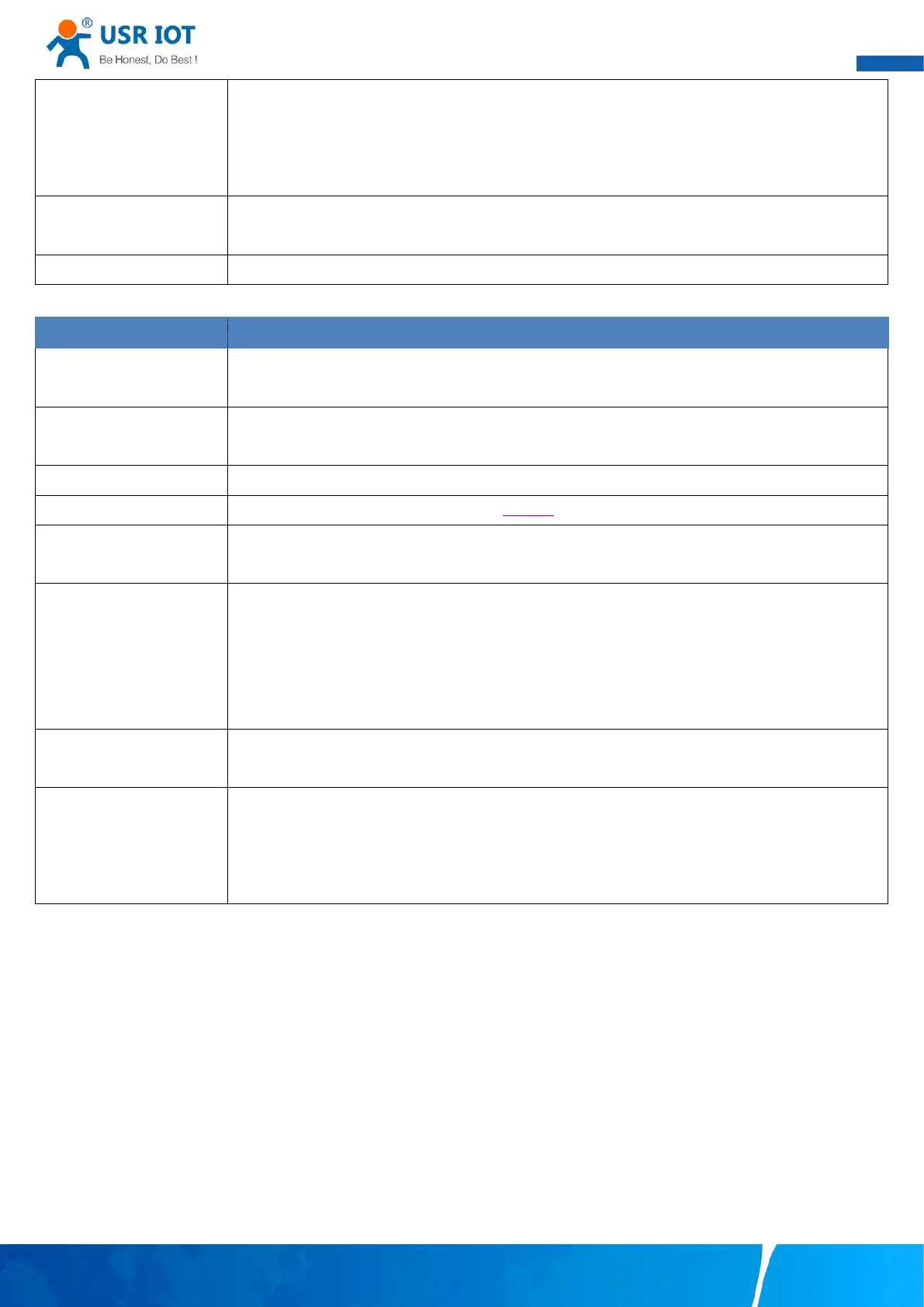User Manual
Your Trustworthy Industrial IoT Partner www.pusr.com
If 60 milliseconds is required to collect the data of each property, the total time required to collect the
data of all properties is calculated as follows:
Total required time = Time required to collect the data of each property (60 ms) × Number of
properties for the slave device.
This function is usually combined with register mapping to realize a single modbus command query in
data query.
This function is used when the register address of many data points are sequential
Table 15 Data point(node) configuration
Identifier of the data point, which must be unique for the gateway. The name must be 1 to 30
characters in length and can contain letters, digits, and underscores (_).
The Modbus RTU master supports the following Modbus functions: 1 Read Coils, 2 Read Discrete
Inputs,3 Read Multiple Holding Registers, 4 Read Input Registers.
The address of the register from which data will be read.
Defines how read data will be stored. See table 22.
If the Modbus device does not receive a response within the time specified here, the communication
times out. Valid settings are from 10 – 65535ms.
The trigger of reporting data. Valid values:
On Change: The report is triggered if the collected data changes. You can use a tolerance to only log
the data point if the value changes more than X amount.
Interval: Collect the variable data at the poll interval and report the data at the specified report interval.
Timer: Collect the variable data at the poll interval and report the data at the regular time.
This function is usually combined with modbus address mapping to realize a single modbus command
query in data query.
Modbus register store only whole numbers. For this reason a scale factor often needs to be applied.
For example a modbus register with a temperature value may read as 723 and a multiplier of 0.1 need
to be applied to get the correct value of 72.3 in the SCADA system,the formula is %s*0.1. If the data
type is a Float then the multiplier is not needed. This computation supports +, -, * and / operators.
